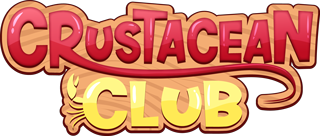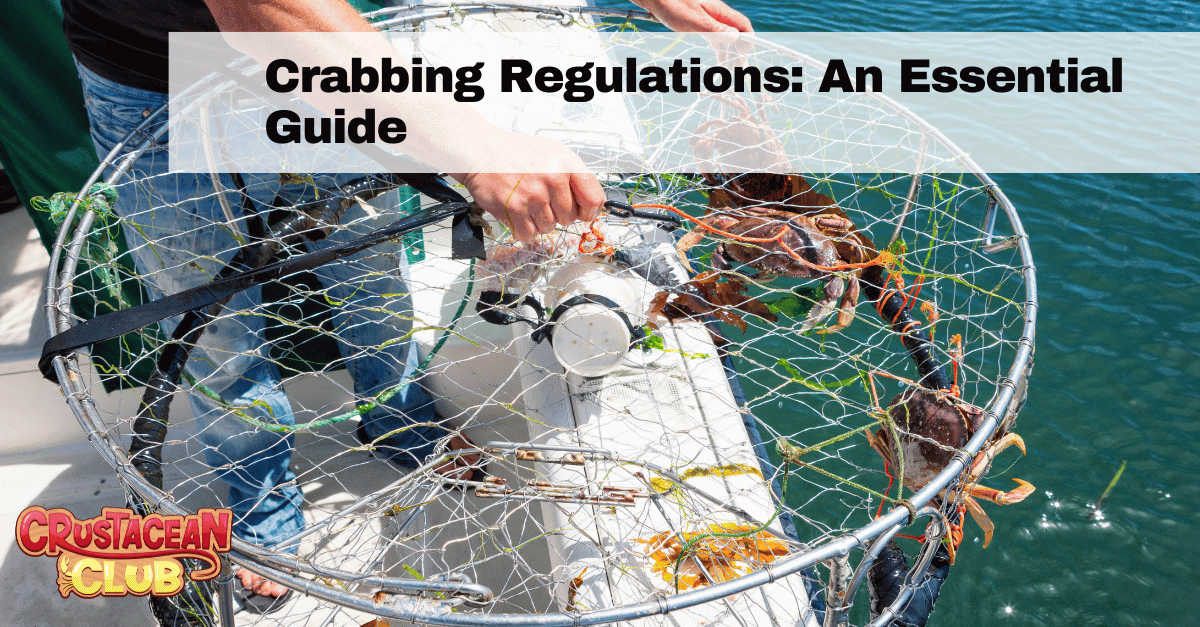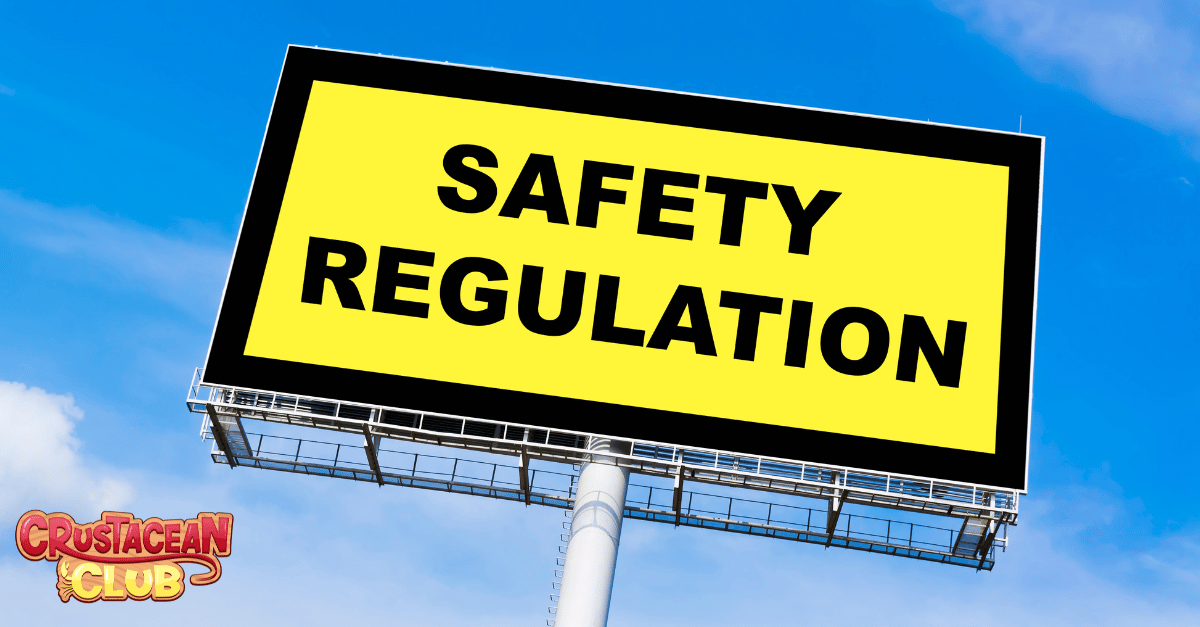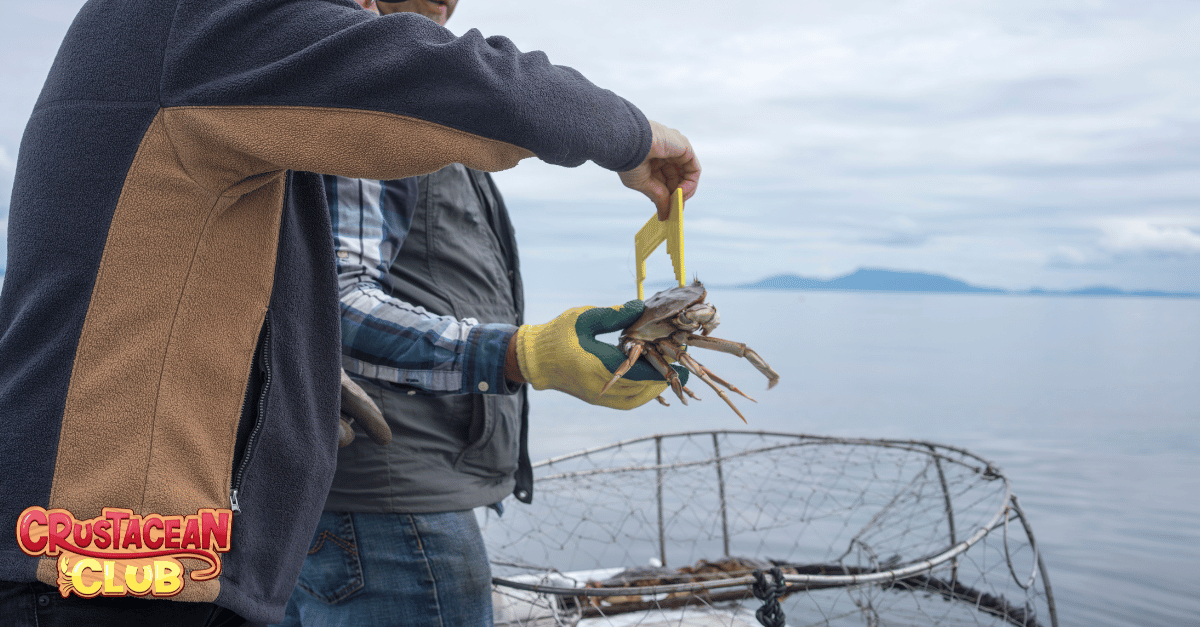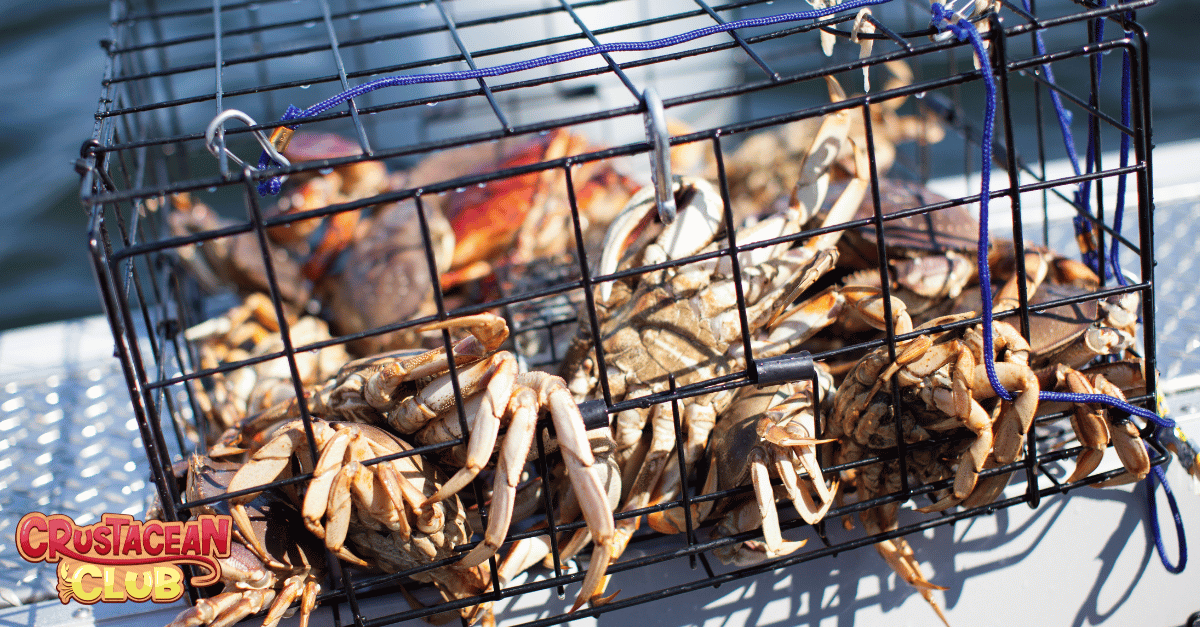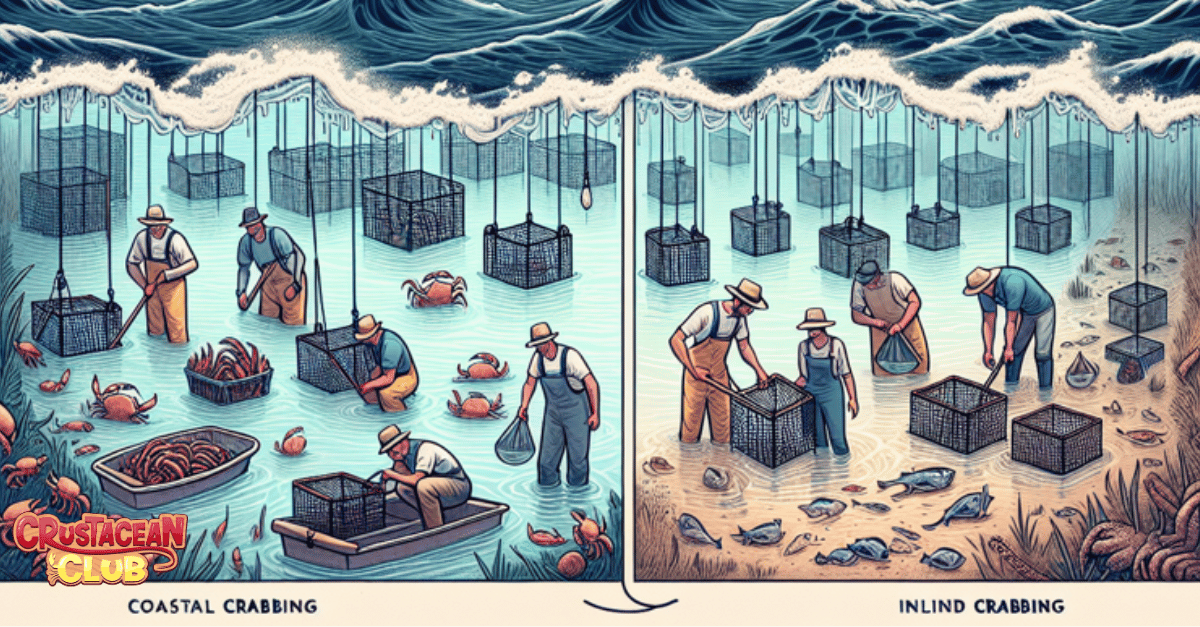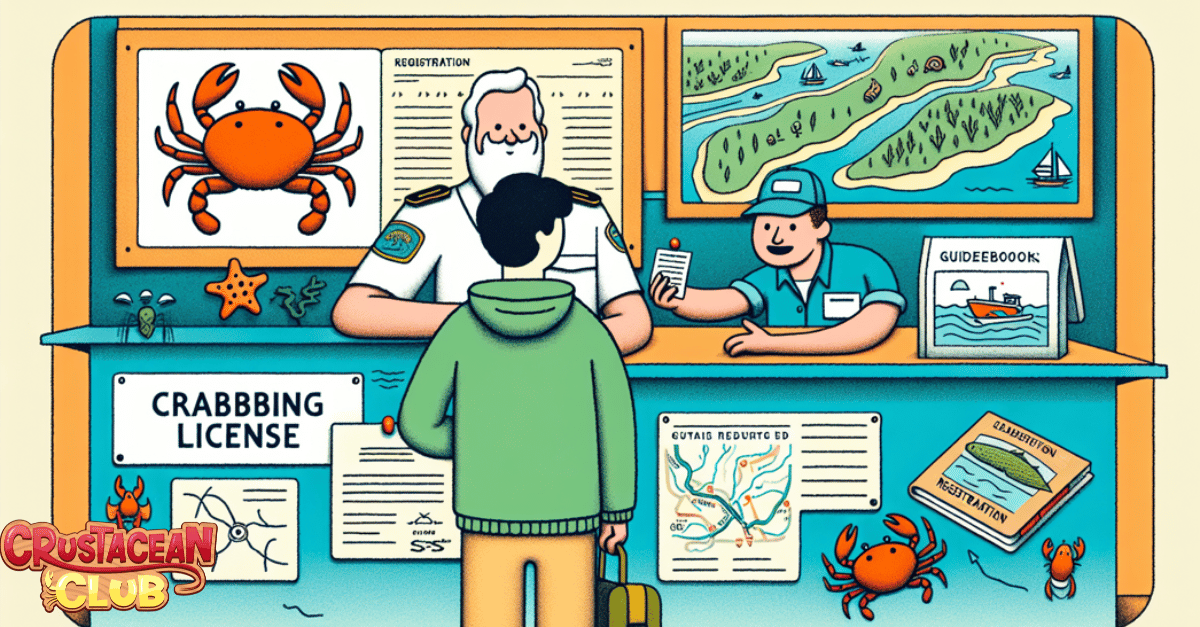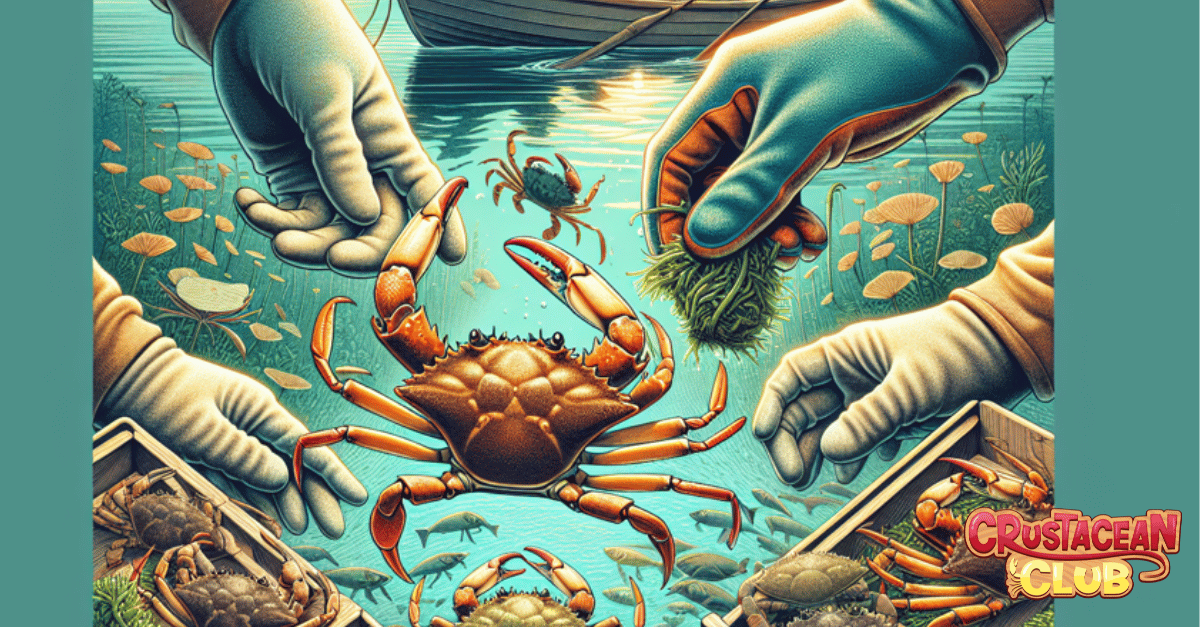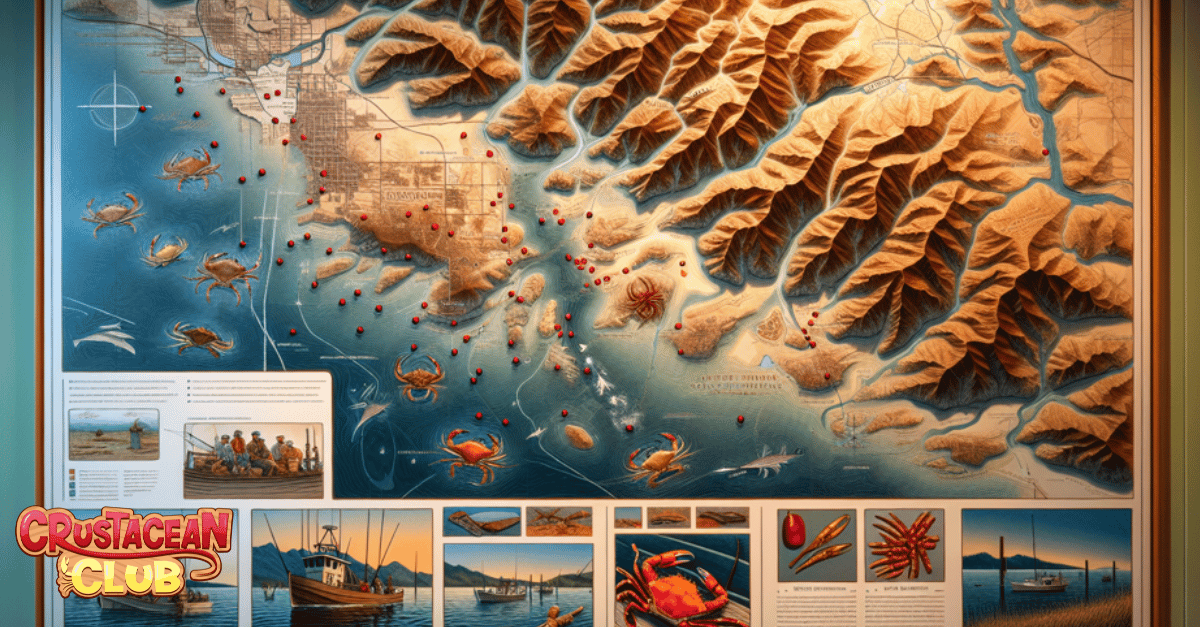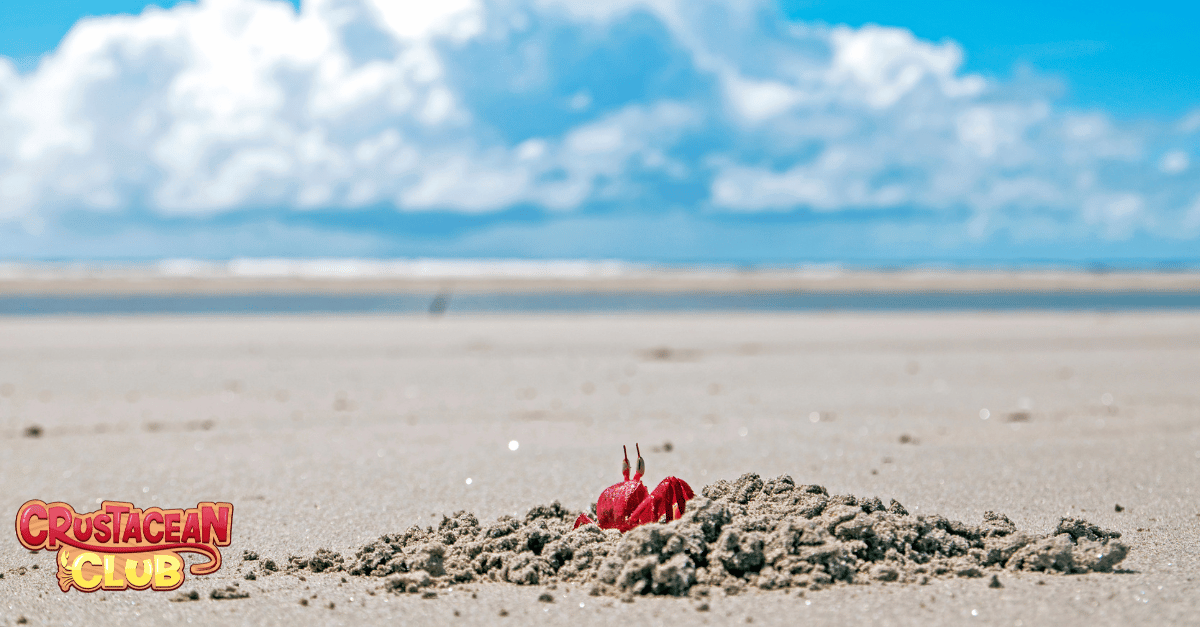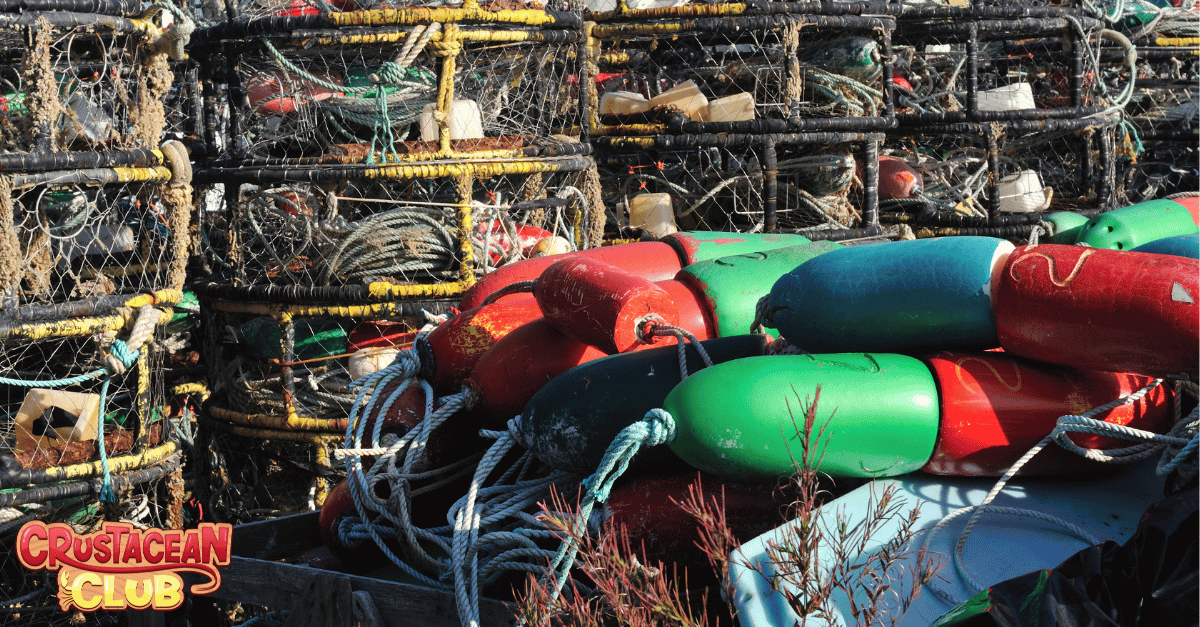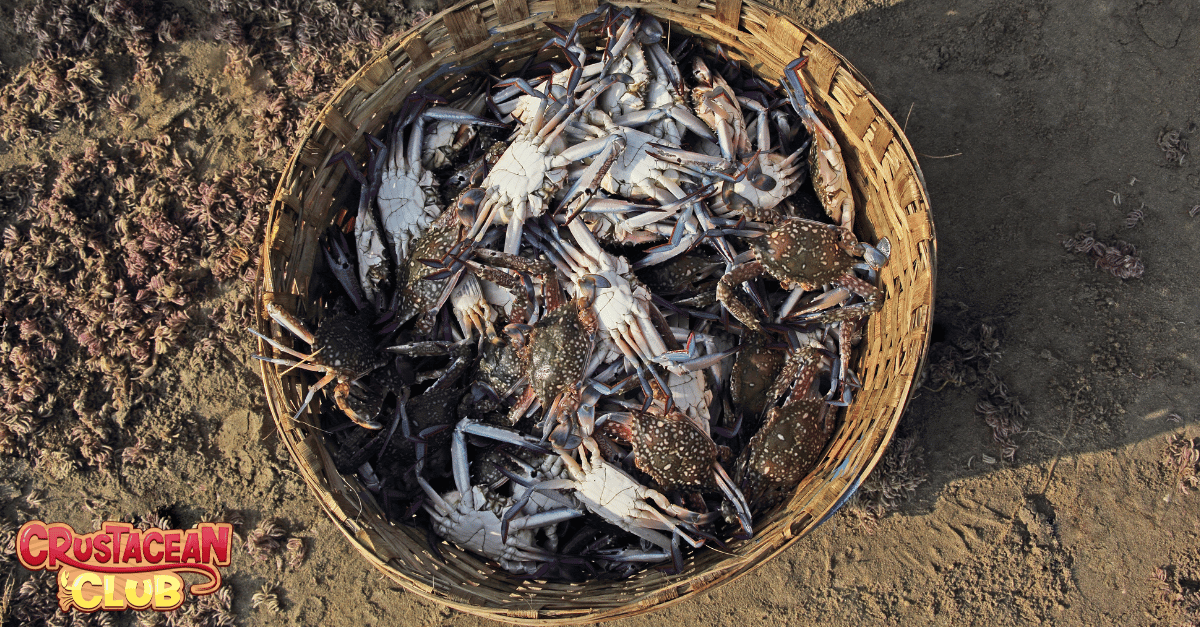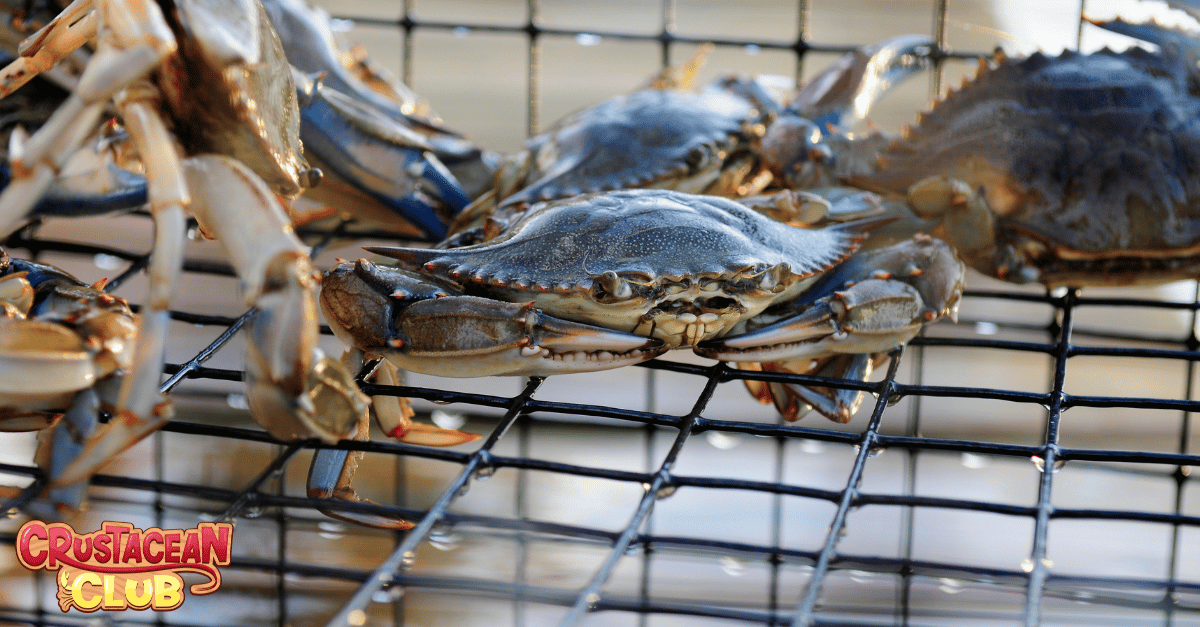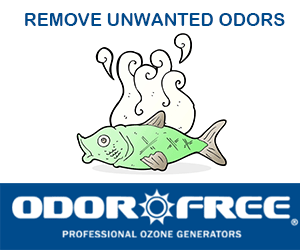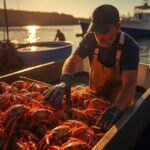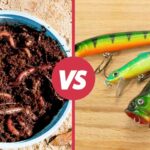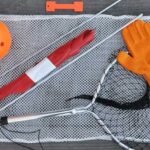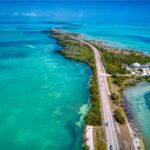Crabbing Regulations: An Essential Guide
Looking to navigate the waters of crabbing regulations? Our guide cuts through the complexity to bring you the vital information you need, from size and catch limits to seasonal timeframes and gear guidelines. Whether you’re planning a recreational outing or engaging in commercial crabbing, we’ll unpack the rules that will keep you compliant and your catch legal. Stay informed and ensure your crabbing contributes to conservation efforts without any legal snags.
For more information on all things crab, be sure to check out the Crustacean Club site!
Key Takeaways
- Crabbing regulations ensure the sustainability of marine ecosystems, with legal frameworks in place that dictate seasons, catch limits, size requirements, and permissible gear and methods to protect aquatic life.
- State-specific laws, such as those in New York, provide detailed guidelines for crabbing, including seasonal timeframes, species-specific restrictions, and conservation measures to preserve vulnerable populations and promote ethical practices.
- Crabbing licenses and registrations are mandatory for commercial crabbers, while recreational crabbing may have different requirements; all crabbers are encouraged to understand and comply with regional laws, reporting procedures, and conservation efforts to maintain marine biodiversity.
We love hearing from our readers and subscribers, so please feel free to reach out and contact us today!
Understanding Crabbing Regulations:
When you think of crabbing, images of traps and bait, the excitement of a hefty catch, and the taste of fresh seafood might spring to mind. But beneath the surface of this age-old pastime lies a framework of fishing regulations designed to ensure the sustainability of our marine ecosystems. By adhering to these rules, we not only partake in the joy of crabbing but also contribute to the protection of aquatic life and their habitats. Consider the consequences of straying from these guidelines; not only do you risk legal repercussions, but you also jeopardize the very crabs that inspire such passion among anglers.
The importance of familiarizing oneself with the local freshwater fishing regulations cannot be overstated. Before setting out with your gear, it is imperative to understand the limits, seasons, and equipment permitted in the waters you wish to explore. Moreover, with increased monitoring efforts to detect and penalize illegal crabbing activities, compliance is not optional; it is an essential part of responsible fishing.
Seasonal Timeframes for Crabbing
Imagine the anticipation as the month of June heralds the start of the crabbing season in many regions. But did you know that in New York, blue crab fishing is open all year round? While this may seem like an invitation to crab at will, it’s important for anglers to check the specific season dates to ensure compliance with the fishing regulations for their targeted species and waters. Seasonal timeframes are put in place not only to regulate the activity but also to protect the crabs during crucial periods of their life cycle, such as molting or breeding.
To fully appreciate the rhythm of the seasons, one must consider how they affect the behavior and abundance of crabs. By aligning crabbing activities with these natural cycles, you not only increase your chances of a successful outing but also support the conservation efforts that keep these crustaceans thriving in their natural habitats.
Legal Catch Limits and Size Requirements
Wielding a net with skill and patience is part of the crabbing tradition, but so is recognizing when to pull it back empty. In New York, for example, the law permits a daily recreational harvest of 50 crabs per person. However, these crabs must meet certain size requirements: 4 1/2 inches for hard shells, 3 1/2 inches for soft shells, and 3 inches for peelers or shedders. This ensures that only mature crabs are taken, allowing younger ones to grow and reproduce.
Anglers and fisheries alike are called to respect these parameters set for the harvest of not just blue crabs but also other species like the lady crab and the rock crab, as detailed on the Saltwater Fishing Regulations page. It is this adherence to legal catch limits and size requirements that maintains the delicate balance within marine ecosystems and ensures that future generations can continue to enjoy the pastime of crabbing.
Permissible Gear and Methods
With a variety of gear at one’s disposal, it’s essential to select the tools that align with the fishing regulations. Recreational crabbers have an array of options, including:
- Baited handlines
- Dip nets
- Collapsible traps
- Non-collapsible crab pots
Each piece of equipment plays a role in the strategy of crabbing, but it’s the use of sustainable practices, like the inclusion of turtle excluders and escape rings for undersized crabs, that truly defines a responsible angler.
Furthermore, gear such as traps must be clearly marked with the crabber’s permit number and contact information — a regulation designed not just for legal compliance but also for the safety of marine habitats. By using permissible gear and methods, crabbers ensure their activities do not negatively impact the aquatic environment, paving the way for a healthy crab population that can be enjoyed by all.
Navigating State-Specific Crabbing Laws:
Each state weaves its own tapestry of crabbing laws, vibrant with the nuances of local ecosystems. In New York, the tapestry is detailed with daily possession limits for various species, such as the lady and rock crabs, and commercial crabbers are called upon to submit detailed fishing trip reports to paint a picture of the crab populations’ health. These state-specific fishing regulations serve as a map, guiding both the hobbyist and the professional through the waters of legal and sustainable crabbing.
As the data on recreational crabbing and the trends in blue crab populations in New York are meticulously documented in the DEC’s annual report, it becomes evident that these regulations are more than mere rules; they are a commitment to stewardship of the fisheries. By navigating these laws, we not only ensure our compliance but also participate in a larger effort to understand and protect the marine life that so richly defines our coastal experiences.
Coastal vs. Inland Water Regulations
The lure of the sea is distinct from the call of rivers and tributaries, and so too are the regulations that govern them. For those casting their lines in the marine and coastal districts of New York, special gear restrictions like the mandatory use of Terrapin Excluder Devices on crab pots are in effect to protect local wildlife such as the diamondback terrapin turtles. These coastal waters, where the ebb and flow of the tide dictate the rhythm of life, are subject to regulations designed to preserve their unique ecosystems.
In contrast, inland waters—serene and still—may not require such specific gear but are nonetheless governed by their own set of rules. Whether you’re navigating the vast ocean or a tranquil river, understanding the distinct freshwater fishing regulations for each environment is crucial for any angler hoping to enjoy the bounty of these waters while safeguarding their future.
Special Restrictions for Vulnerable Species
Crabbing is not a pursuit without conscience; it is a privilege that comes with the responsibility to protect those species that are particularly vulnerable. The ban on the harvest of American horseshoe crabs in New York for certain uses is a testament to this ethos, a measure vital for maintaining the coastal ecosystem. Additionally, recreational harvesters face a daily possession limit of 5 horseshoe crabs per person, with recommended practices to ensure the wellbeing of these ancient mariners.
Other species, too, benefit from the shelter of these regulations. For Jonah crabs, a minimum size limit has been established, and the capture of egg-bearing crabs is restricted to protect the next generation. The Atlantic States Marine Fisheries Commission oversees compliance with these measures, ensuring the health and longevity of these fish species. These conservation efforts embody our collective dedication to preserving the rich diversity of life beneath the waves.
Licensing and Registration Requirements
The gateway to the waters, the key to the crabbing treasure chest, is often found in the form of a license or registration. While recreational crabbing in New York spares enthusiasts this requirement, commercial crabbers must obtain a permit to engage in the sale or extensive harvest of crabs. This distinction underscores the importance of understanding the regulations that apply to your specific crabbing endeavors, whether they be for leisure or livelihood.
With certain exemptions to licensing requirements, such as those for anglers fishing with certified NYC charter operators, it’s clear that the framework of freshwater fishing regulations is designed to be as accommodating as it is protective. It is within this framework that we find the balance between accessibility to the sport and the preservation of the resources that make it possible.
Where to Obtain a Crabbing License
For those whose crabbing activities fall under the commercial banner, the next step is to secure the proper permits. In New York, these permits are readily available through the New York State Department of Environmental Conservation’s Marine Permits and Licenses page. The process is designed to be straightforward, ensuring that all commercial crabbers can easily comply with the regulations and contribute to the sustainable management of the fishery.
While recreational crabbers in New York do not require a license, it is always wise to verify the fishing regulations of the destination you plan to visit. Whether you’re casting your pots in the Empire State or elsewhere, taking the time to understand and obtain the necessary documentation is a crucial step in your crabbing journey.
Exceptions and Exemptions
Sometimes, the world of fishing regulations offers a reprieve in the form of exceptions and exemptions. In the case of recreational crabbing in New York, no license or permit is needed, eliminating the need for exceptions or exemptions in this context. In addition, crabbing is exempt from enrollment in the Recreational Marine Fishing Registry, a fact that streamlines the process for eager crabbers and reflects the state’s commitment to making this activity accessible to all.
This exception is not just a convenience but a gesture of trust, one that empowers individuals to partake in the tradition of crabbing responsibly. It is a perfect example of how regulations can be tailored to encourage participation while still prioritizing conservation and ethical practices, making it an exception worth noting.
Conservation Measures and Ethical Practices:
The call to uphold conservation measures and ethical practices in crabbing is not just a legal mandate; it’s a moral imperative. Each time a crabber sets a trap or casts a line, they engage in an act that reaches beyond the immediate thrill of the pursuit. Responsible crabbing supports not only the health of marine ecosystems but also the livelihoods and dietary needs of communities that rely on these shellfish. Public education on the consequences of overfishing and the benefits of responsible crabbing is crucial for marine conservation, ensuring that the abundance of the seas remains for future generations.
Sustainable crab populations are the cornerstone of marine conservation efforts, and each crabber plays a role in maintaining this vital resource. By adopting ethical practices, we contribute to a legacy of stewardship that will allow us to continue enjoying the bounty of the ocean for years to come.
1. Handling and Release Protocols
The gentle handling and quick release of crabs that don’t meet legal catch sizes is more than just good manners; it’s an act that ensures the health and future abundance of crab populations. These protocols, rooted in a deep respect for marine life, are essential in minimizing stress and injury to the crabs, promoting their survival and the overall wellbeing of the ecosystem.
Furthermore, the use of Terrapin Excluder Devices in crab pots highlights the care taken to protect not only the crabs but also other species like the diamondback terrapins, crucial for the health of saltmarsh ecosystems. By adhering to these handling and release protocols, crabbers demonstrate their commitment to the ethical treatment of the creatures that provide them with both challenge and reward.
2. Reporting and Compliance
The tapestry of crabbing is woven with the threads of individual experiences, and reporting these encounters is vital for the fabric’s integrity. Through the Digital Survey of Recreational Blue Crabbing, recreational crabbers can contribute to the monitoring and management of blue crab populations, providing valuable data for conservation efforts. Additionally, the New York Department of Environmental Conservation’s Blue Crab Tagging Program relies on crabbers to report tagged crabs, a crucial step in tracking the species’ health and distribution.
When an invasive species like the Chinese mitten crab or the dungeness crab finds its way into the trap, the responsibility of the crabber is clear: photograph, note the location, and report to authorities. This protocol aids in managing the impact on native ecosystems and underscores the importance of compliance with regulations and best practices.
Regional Hotspots and Prime Crabbing Locations
The allure of New York’s crabbing scene is not lost on enthusiasts who flock to its extensive shorelines and islands, eager to explore the abundant waters. From the Hudson River to Jamaica Bay, each location presents a unique environment teeming with the potential for an impressive haul. These regional hotspots not only offer an abundance of crabs but also serve as windows into the diverse marine life that thrives along the North Atlantic coast.
In these areas of natural significance, where wildlife like horseshoe crabs and birds converge, crabbers find themselves at the heart of a living, breathing ecosystem. Here, the excitement of the catch is matched only by the beauty of the surroundings, making these prime crabbing locations not just a destination for the hobbyist but a haven for all who seek a connection with the natural world.
Selecting the Right Spot
The quest for the perfect crabbing location is akin to finding a hidden gem; it requires insight into the natural world and a touch of local wisdom. Tidal currents, offering both challenge and opportunity, can help concentrate crabs, making areas around mid-tide levels particularly fruitful. Water clarity, too, plays a role in crab behavior, with murkier waters providing a safe haven for these creatures to thrive.
Eelgrass beds and sandy bottoms near rock piles or pilings create ideal habitats for different crab species, offering ample shelter and food sources. Speaking with local crabbers and referring to state wildlife websites can further aid in pinpointing established crabbing hotspots, ensuring a visit well worth the effort.
Local Resources and Guides
To elevate your crabbing experience, consider tapping into the expertise of local charter operators. As custodians of their aquatic territories, they serve as invaluable guides, leading both novice and seasoned crabbers to the most promising waters. In New York City, the variety of crabbing and fishing trips offered is tailored to meet the needs of a diverse clientele, promising an adventure that aligns with your skills and interests.
Whether you seek a brief inshore excursion or a full-day offshore adventure, these local resources are at your disposal, equipped with the knowledge and tools to enhance your pursuit of the elusive catch. By choosing to engage with these guides, you not only enrich your own experience but also support the local communities that thrive on the ebb and flow of these prime crabbing locations.
Preparing for Your Crabbing Adventure
As you stand on the brink of your own crabbing adventure, the excitement builds with the anticipation of a day spent by the water, traps at the ready. Yet, the key to a truly successful experience lies in preparation. From ensuring you have the correct equipment to understanding the specifics of the crabbing process, preparation is the cornerstone of a fruitful outing.
A sturdy pull line to match the depth of your destination, adequately weighted traps to resist the water currents, and a thorough checklist of supplies are the foundation of a well-planned crabbing trip. By equipping yourself with the necessary gear and knowledge, you set the stage for a day of enjoyment that respects both the craft of crabbing and the habitats you’ll visit.
Essential Crabbing Gear Checklist
Embarking on a crabbing adventure requires more than just enthusiasm; it calls for a well-stocked tackle box and a readiness for the day’s challenges. Your gear checklist should include:
- traps
- pull lines
- floats
- bait bags with tiedowns
- a basket or bushel for storing your catch
- calipers for measuring crabs, ensuring you comply with size regulations
- a net or box to keep your crabs in water, maintaining their freshness
Don’t forget to pack all of these items before heading out on your crabbing trip.
In addition to the tools of the trade, personal comfort is paramount. Here are some essential items on your crabbing gear checklist:
- A hat to shield you from the sun
- Bug spray to fend off insects, especially in marshy areas
- Sufficient fresh water and snacks to maintain hydration and energy
With each item ticked off, you’re one step closer to a crabbing adventure that’s both enjoyable and in harmony with the environment on your chosen date.
Catch Storage and Transport
Once the thrill of the catch has passed, the focus shifts to the preservation of your bounty. Proper storage and transport methods are essential to maintain the freshness of live crabs and minimize harm during their journey from water to table. Storing live crabs on ice in a cooler slows their metabolism, vital for their survival until they reach your destination.
During longer transports, it’s important to keep crabs moist and oxygenated, using wet towels from their habitat and replenishing the water as needed. Additionally, protecting them from wind and sun is critical, as these elements can be detrimental to their welfare. By following these guidelines, you ensure that your catch remains in prime condition, reflecting the respect and care that true crabbing enthusiasts hold for their quarry.
Summary
As the sun sets on our exploration of crabbing regulations and practices, we are reminded that the true reward of this pastime lies not in the heft of the catch but in the harmony we maintain with the marine world. By adhering to the regulations, embracing ethical practices, and preparing meticulously for our adventures, we sustain the ecosystems that provide us with such rich experiences. May the knowledge shared here inspire you to cast your lines responsibly, ensuring that the waters remain bountiful and the tradition of crabbing continues to thrive for generations to come.
Frequently Asked Questions
Do I need a license for recreational crabbing in New York?
No, you do not need a license for recreational crabbing in New York, which makes it an easily accessible activity for everyone.
What are the legal catch limits and size requirements for blue crabs in New York?
In New York, the legal catch limit for blue crabs is 50 crabs per person, with size requirements of 4 1/2 inches for hard shells, 3 1/2 inches for soft shells, and 3 inches for peelers or shedders.
Can I use any type of gear for crabbing?
Yes, you can use a variety of gear for crabbing, but it must comply with state-specific fishing regulations and include features like escape rings for undersized crabs and turtle excluders where required.
What should I do if I catch an invasive crab species?
If you catch an invasive crab species, such as the Chinese mitten crab, it’s important to photograph it, note the location, and report it to authorities instead of releasing it. This helps manage the impact on native ecosystems.
Where can I find the best spots for crabbing in New York?
You can find the best spots for crabbing in New York along the extensive shorelines and over 40 islands, where tidal currents, water clarity, habitat preferences, and local expertise can all contribute to the prime locations.
